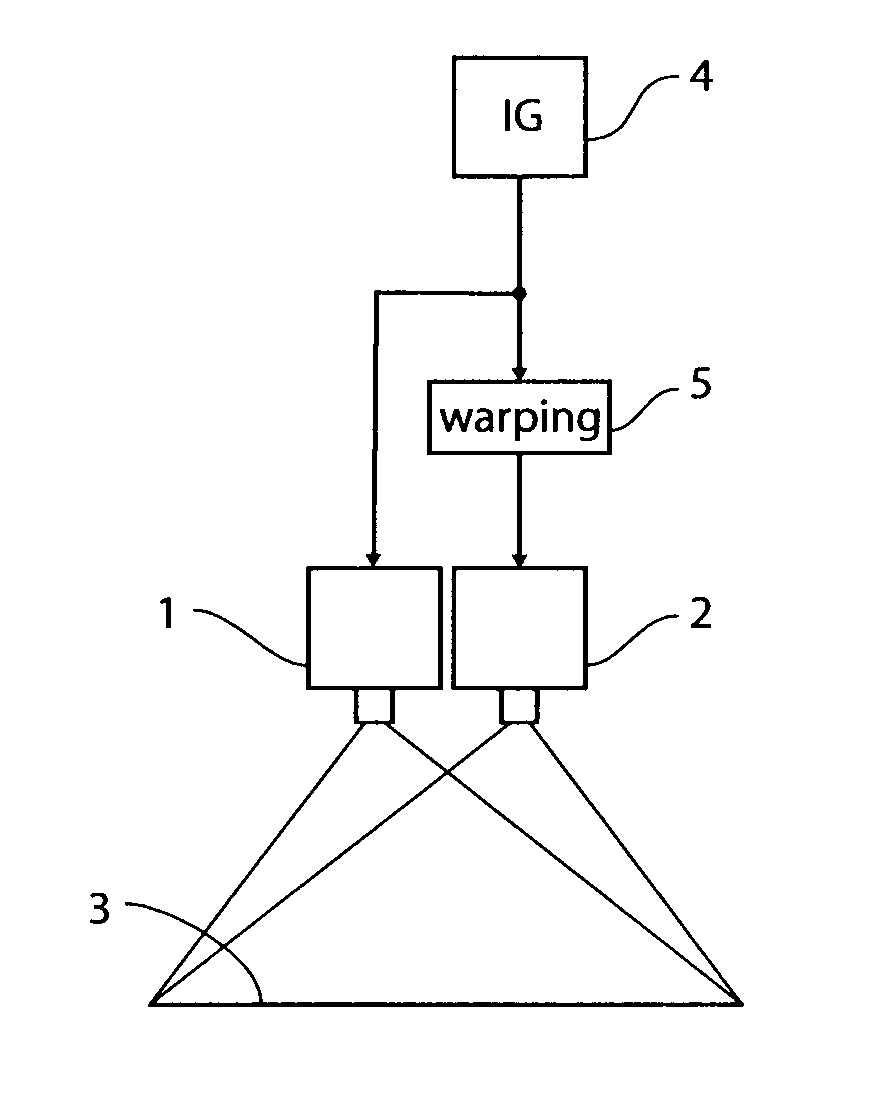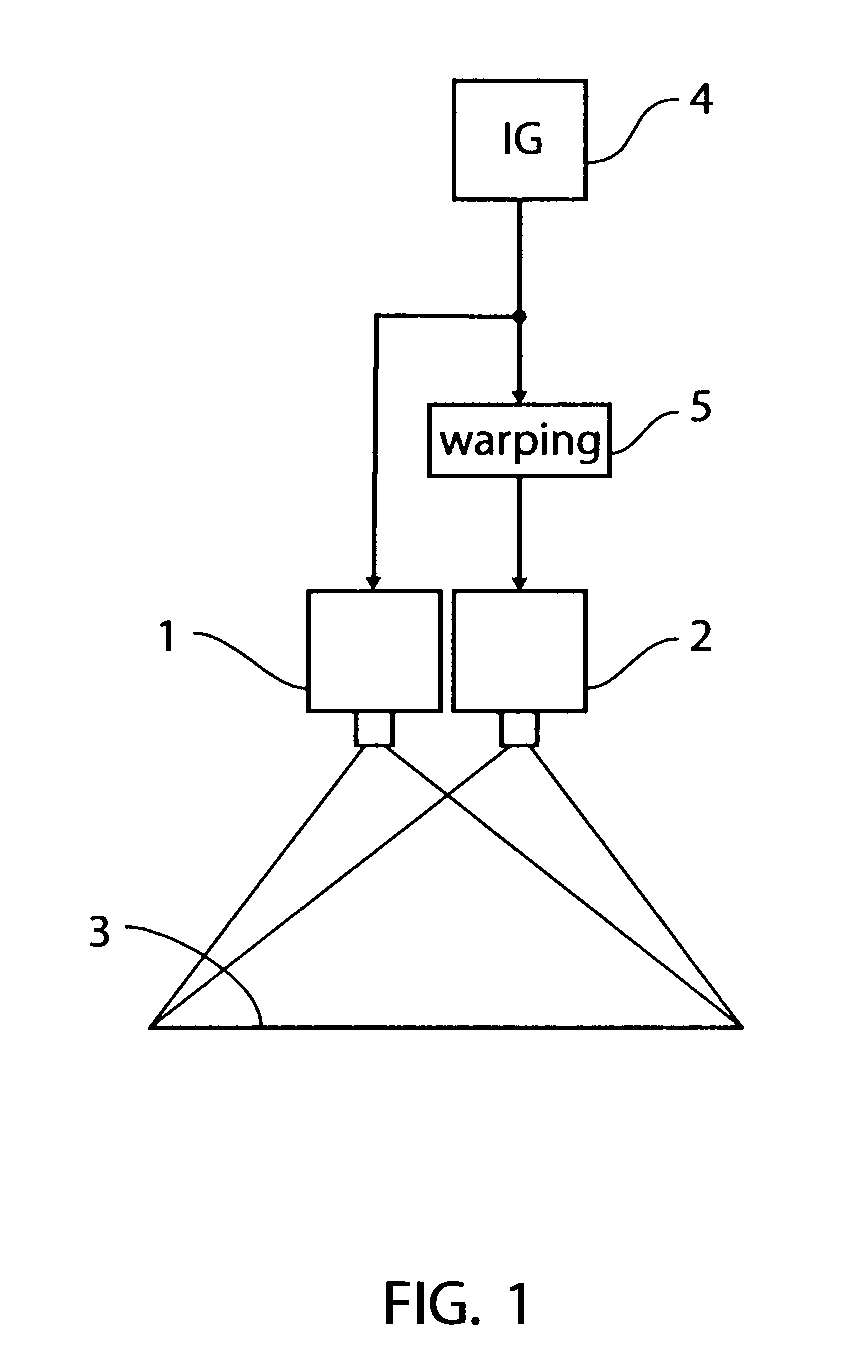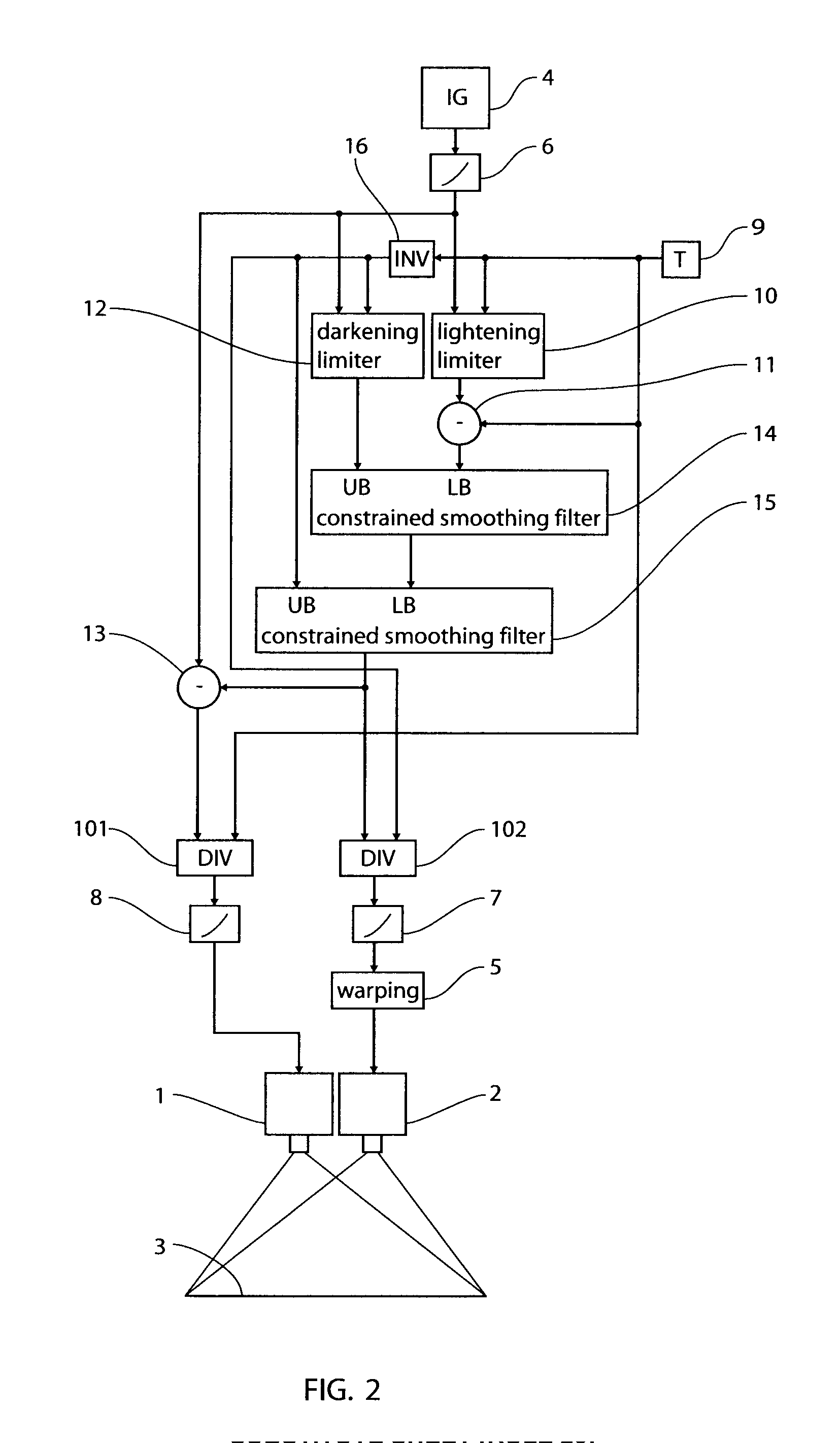Double stacked projection
a projection device and projection technology, applied in the field of double stacked projection, can solve the problems of difficult alignment of double stacked projectors, lack of brightness, and difficulty in traditional double stacking at such high resolution
- Summary
- Abstract
- Description
- Claims
- Application Information
AI Technical Summary
Benefits of technology
Problems solved by technology
Method used
Image
Examples
first embodiment
[0114]In an alternative, simplified configuration of the first embodiment, the darkening image limiter 12 may be omitted and a uniform, maximum intensity image may be supplied to the upper bound input of the first constrained smoothing filter 14.
illustration 4
[0115]Illustration 4 shows graphs of values in an example section of a row of pixels at different stages of the processing, the first graph in illustration 4 shows the output of the gamma decoding circuit 6, the second graph shows the output of the darkening limiter 12 and the third graph shows the output of the first image subtraction circuit 11.
illustration 5
[0116]Illustration 5 shows three graphs of values in the example section of a row of pixels at different stages of an operation of the constrained smoothing filter 14 with a dilation radius r1 of 3 pixels and a blur radius r1′ essentially equal to r1. In the first graph in illustration 5 the result of the dilation operation is indicated as a black line with the lower bound input indicated in dark gray and the upper bound input indicated in light gray. The second graph shows in a similar manner the result of the blur operation and the third graph shows the result of the darkening operation.
[0117]Illustration 6 shows 3 example graphs of the values in a row of pixels, the first graph in illustration 6 shows the output of the second constrained smoothing filter 15 when r1=3 pixels and r2=0 and r1′ is essentially equal to r1 and r2′ is essentially equal to r2. The second graph shows the output of the image subtraction circuit 13 and the third graph shows summed values of the output of th...
PUM
 Login to View More
Login to View More Abstract
Description
Claims
Application Information
 Login to View More
Login to View More - R&D
- Intellectual Property
- Life Sciences
- Materials
- Tech Scout
- Unparalleled Data Quality
- Higher Quality Content
- 60% Fewer Hallucinations
Browse by: Latest US Patents, China's latest patents, Technical Efficacy Thesaurus, Application Domain, Technology Topic, Popular Technical Reports.
© 2025 PatSnap. All rights reserved.Legal|Privacy policy|Modern Slavery Act Transparency Statement|Sitemap|About US| Contact US: help@patsnap.com



